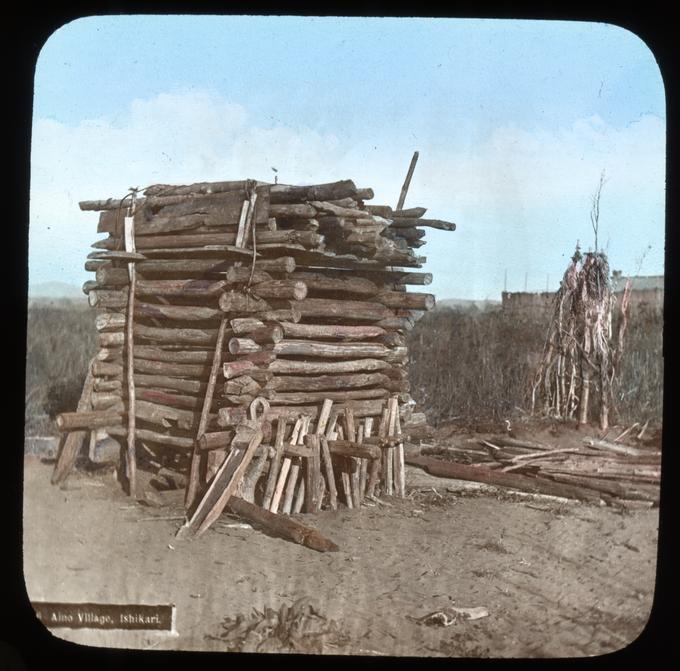Iyomante
Of all the Ainu sending ceremonies, the one that has captivated Japanese and international audiences the most is the iyomante, often translated into English as the “bear festival.” Practiced by many different cultures throughout maritime North Asia, the iyomante continues to be one of the most culturally significant traditions among Ainu communities.1 Associated with the kamuy of the mountains Kim-un Kamuy, bears—and the Ussuri brown bear (Ursus arctos lasiotus) in particular—hold great significance in Ainu culture and were traditionally honored through the iyomante. Preparations for the ceremony began in winter, when hunters would search for hibernating bears. If any mother bears were hunted and killed, their cubs would be taken back to the village, where they were adopted by a local family. Taking in a bear cub was considered a great honor, and these cubs would sleep, eat, and live with the family, raised just like any other children in the house. When the bear grew too large for the house, it was then moved to a wooden cage such as the one seen below, and villagers would continue to dote on the bear, feeding it with the best cuts of meat.
When the cub had matured to about two years of age, the actual ceremony could begin. While the specifics of the ceremony differed by region, generally among Hokkaido communities, the bear would be tied to a post and ritually sacrificed; first with intricately-decorated blunted arrows (which were themselves meant to be offerings), then by sharp-tipped arrows, and finally, after being exhausted, the bear would be finished off by strangulation between two logs.2 Afterward the bear was skinned and dressed as a “doll,” and a large banquet with singing and dancing was held to celebrate the bear’s return to the spirit realm, as seen in the painting Ainu Bear Sacrifice below. After the ceremony, the bear’s skull was then prominently displayed at the entrance to the kotan village to honor it for years to come (these skulls, mounted on nusa, can be seen in Untitled Image of a Kamuynomi above). In Ainu Ceremony in Landscape, artist Kimura Hakō shows the skulls from earlier iyomante proudly displayed on nusa (funerary poles) as members of the community take part in a kamuynomi—a ceremonial prayer and celebration of the kamuy—and offer libations of sake from their ikupasuy “prayer sticks” and tuki lacquer bowls.
The iyomante is an incredibly important ceremony as it offers communities a way to directly communicate with the “god realm” of Kamuy Mosir. The goal of the iyomante is for the community to show their gratitude to the kamuy by raising the bear like a member of the family and bestowing it with gifts and affection, before “sending” it back to Kamuy Mosir, where it would later relay stories of the kindness it received on earth as well as observations of the humans’ reverence for the spirits, in hopes that the kamuy would be pleased and continue to provide humans with all life’s necessities in the future. While similar sending ceremonies were held for man-made, utilitarian goods—like houses and tools3—in addition to animals like owls, dogs, foxes (see images of a fox iyomante on the "Sending Ceremonies" page) and racoon dogs, it is the “bear festival” that has been celebrated with the most fanfare.4 It has long fascinated (and been exoticized by) Japanese visitors and Western anthropologists, and can be seen in countless Ainu-e paintings and documentary photographs, featuring prominently in many of the works in this collection as well.
1.) Richard Zgusta, The Peoples of Northeast Asia Through Time: Precolonial Ethnic and Cultural Processes Along the Coast Between Hokkaido and the Bering Strait (Leiden: Brill, 2015): 42.
2.) Emiko Ohnuki-Tierney, The Ainu of the Northwest Coast of Southern Sakhalin (New York, N.Y.: Holt, Rinehart and Winston, 1974): 96.
3.) Shigeki Akino, “Spirit-Sending Ceremonies,” in Ainu: Spirit of a Northern People, 248-249.
4.) Ibid., 251-252.



